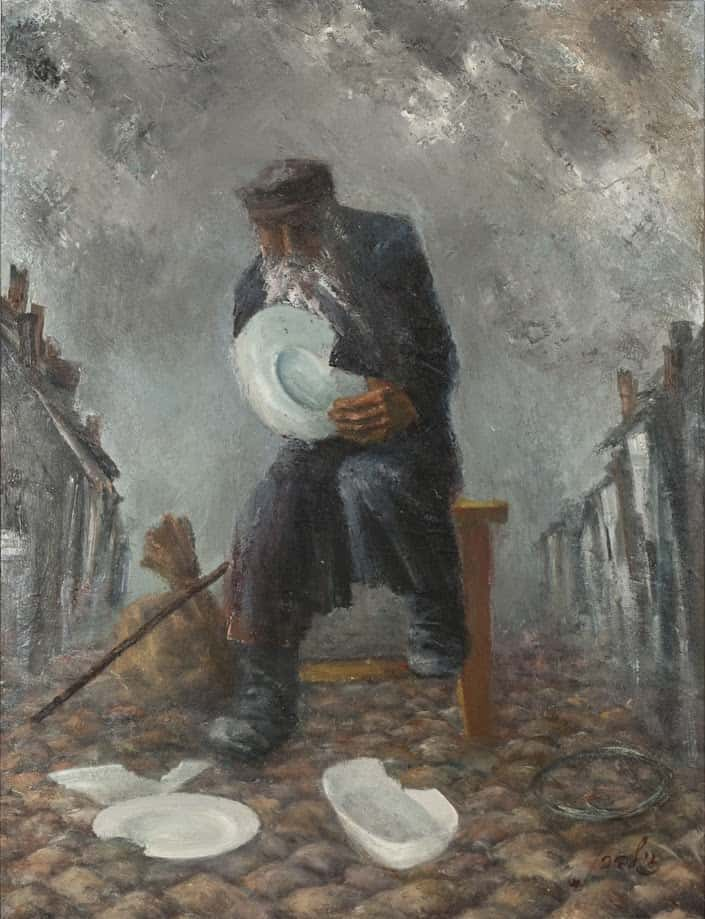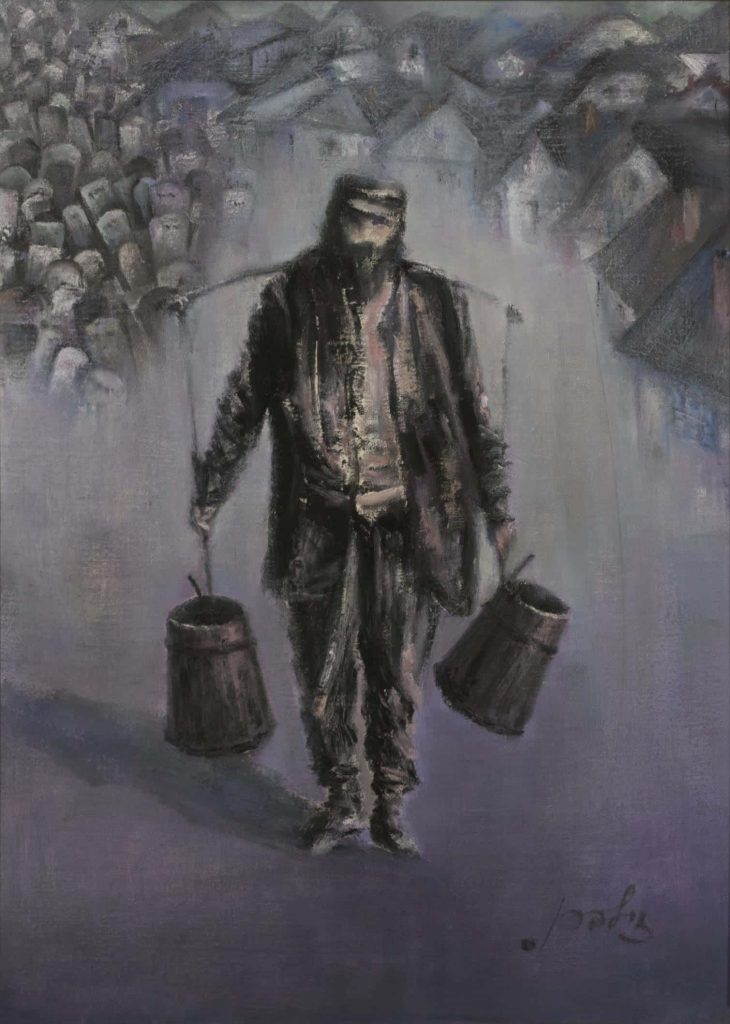Home » The 19th century
From the 18th century to the early 20th century, Jews formed the vast majority of Hrubieszow’s population, dominating commerce, industry, and crafts. At the beginning of the 19th century, a strong Hasidic community emerged in Hrubieszow, making it a hub for Hasidic Judaism. It housed shtieblech (prayer houses) for followers of various Hasidic sects, such as Trisk, Ger, Belz, Radzin, and others. Several rabbis resided in Hrubieszow, including Yosef ben Mordechai Katzenellenbogen and Rabbi Ephraim Zalman Rokach. The Haskalah (Jewish Enlightenment) movement, which opposed Orthodox Judaism, had also spread to Hrubieszów by this time.
The community’s welfare and charity organizations included the Chevra Kadisha (burial society), the Chevrat Midrash (which supported the purchase of holy books and aided the poor), and the Gemilut Chassadim society, which provided affordable loans to craftsmen and small merchants.
In 1809, Hrubieszow was conquered by the Polish army and annexed to the Duchy of Warsaw. Severe restrictions were imposed on the Jewish community, including prohibitions on purchasing land to build houses or establish farms. Various taxes were levied on all of Hrubieszow’s Jewish families, such as a “kosher meat tax” amounting to 73 złoty per year – a hefty sum at the time. While most Jews made their peace with these decrees, one local Jew, Dr. Shlomo Yaakov Kalmanzon, fought to achieve equal rights for Jews, and improved economic, political, and cultural conditions. His father was the Hrubieszów’s chief rabbi, but he left his father’s home as a young man, traveled abroad to study medicine, and returned to Poland to work as a physician in Warsaw. As a thinker who embraced modernity and the Haskala (Jewish enlightenment movement), he maintained connections with all political circles in Poland, and demanded that Jews adapt their way of life to contemporary values. He passed away in Warsaw in 1811.
By the end of the 19th century, Jews made up nearly 60% of Hrubieszow’s population. They owned schools, hotels, two hospitals, breweries, and most of the houses and stalls near the market square. The largest enterprise in Hrubieszów was a tobacco factory established in 1896 by Hershko Kenia. Other industries included a factory for agricultural machinery and tools, owned by Albert Singerot, and a copper workshop. Many Jews were small tradesmen, producing clothing, shoes, or food. Others worked in fur processing, ropemaking, dye production, metalwork, carpentry, tinsmithing, or glassmaking.
The primary source of income for Hrubieszów’s Jewish community was traditional commerce, particularly textiles, clothing, coats, household items, art, luxury goods, and books. Jews managed over 90% of the livestock trade and 88% of the food and grain trade. The shops and slaughterhouses were mainly concentrated in and around the town market.
The town boasted a number of wealthy merchants, including people like Yaakov Peretz, Avram Brandt, Berko Shapiro, Shlomo Rigiel, Chamiya Berliner and Yosef Gartner. Beyond industry, trade, and crafts, the Jewish community also earned significant income from renting out shops, marketplaces, bathhouses, slaughterhouses, and mills. Some residents made their living in real estate and transportation. During this period, many elementary schools for Jewish children were established. In 1844, a Jewish hospital was built. This was among the first medical institutions in Poland founded and owned by the Jewish community. The institution’s first physician was Dr. Zvi-Hirsch Goldschmidt (grandfather of Hirsch-Henrik Goldschimdt, better known as Janusz Korczak. in 1874 an impressive new brick synagogue was built.
The Polish Government’s Attempt to Establish Schools for Jews
In 1817, a report was published by the “State Committee for Religious and Public Education Affairs”, which addressed the educational system for the Jews in the Lublin district, including Hrubieszow. At the behest of Stanisław Potocki , the Polish minister of education, the Polish government sought to improve the Jews’ quality of life by establishing special schools for Jewish children. This initiative aimed to teach Jewish children the Polish language and familiarize them with Polish customs and the Polish lifestyle.
The report stated as follows:
“It is impossible for us to dictate to the followers of the Mosaic faith that they send their children to schools shared with Catholic and Christian children in general. They are wrongly convinced, and being uneducated, they cannot decide to stop dressing their children in traditional clothing, removing skullcaps from their heads, or cutting their sidelocks, despite our attention to these matters. Parents who initially intended to send their children to government schools declared, upon learning of the conditions and restrictions, that they were unable to comply.
Since the Jews in Hrubieszow pay a tax of 400 Polish zlotys annually to support the Catholic teacher, the Jewish parents declared to the Commissioner from the Department of Education, who visited the schools, that they demand exemption from this tax. They further stated that even if fined tenfold, they would by no means send their children to a Catholic-Christian school.”
The committee opined that a special school should be established for Jewish children, with either a Christian teacher or a suitably educated Jewish teacher serving as a community officer. This way, Jewish children could learn to read and write. However, no such Jewish school was ever established.
In 1818, Rabbi Yosef ben Mordechai Katzenellenbogen, a prominent leader of Polish Hasidism, assumed the leadership of the Hasidic sect. He emerged as a dynamic leader, working tirelessly for the welfare of the Jewish community in the city and dedicating most of his time to the needs of the Jewish public.
Having seen the suffering of sick, impoverished and homeless individuals, he decided to raise money to build a hospital and an elementary school. He instructed the community officials to join him in collecting donations. Once he had gathered enough money, he ordered the construction of a building with six rooms, with separate spaces for men and women, in which he established a hospital and a shelter for the mentally ill. A pharmacy was also opened adjacent to the hospital.
Rabbi Katzenellenbogen passed away in Austria while attending the wedding of his son, Rabbi Baruch.

